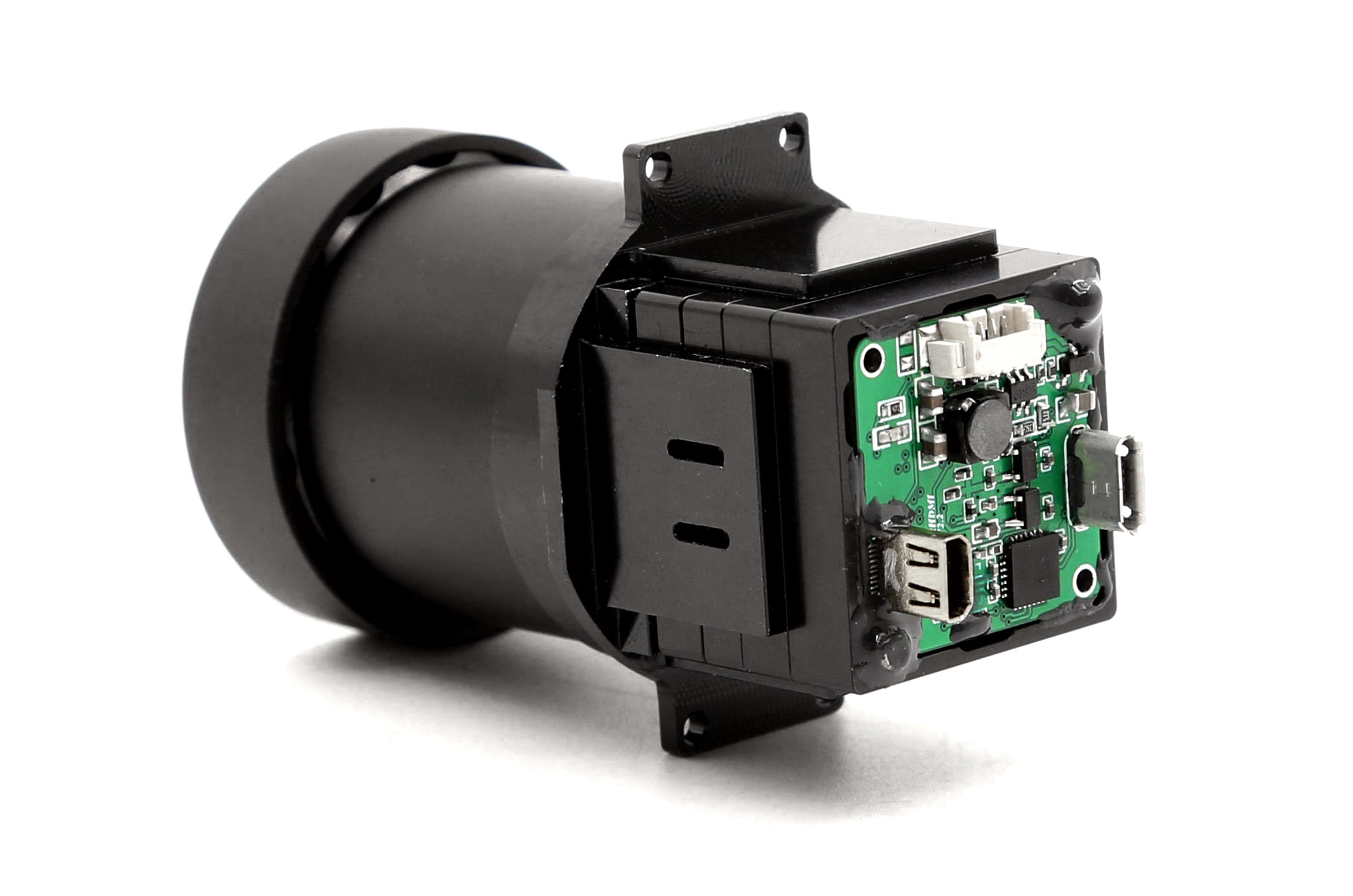December 17, 2024By: MH TECHView: 116

1. Target characteristic factors
Target temperature: The higher the target temperature, the greater the intensity of its infrared radiation. For example, high-temperature targets such as running military equipment engines and missile tail flames just after launch can emit strong infrared radiation. According to the Stefan-Boltzmann law, the radiation flux of a black body (an idealized radiation source) is proportional to the fourth power of the temperature. Therefore, the infrared radiation of high-temperature targets is easier to detect and the detection distance is farther. For targets with temperatures close to the background, such as equipment covered by camouflage nets at normal temperature, their infrared radiation is weaker and the detection distance will be shortened accordingly.
Target size and shape: Larger targets radiate more total energy at the same temperature, just like a large heat source emits more heat than a small heat source. The shape of the target will also affect the distribution and intensity of infrared radiation. Targets with regular shapes and large surface areas, such as large ships and aircraft fuselages, are more likely to be captured by infrared detectors than small and irregular objects, and their detection distance is longer.
Target surface characteristics: The emissivity of the target surface determines the efficiency of its infrared radiation. Materials with high emissivity, such as metal oxides, can more effectively emit internal heat energy in the form of infrared radiation. In contrast, some low-emissivity materials, such as polished metals, reflect more infrared radiation and emit less infrared radiation themselves, resulting in limited detection distance.
2. Infrared detector performance factors
Detector sensitivity: Highly sensitive detectors can sense weaker infrared radiation signals, thereby increasing the detection distance. For example, infrared equipment using advanced mercury cadmium telluride (HgCdTe) detector materials has a higher sensitivity and can detect infrared radiation emitted by targets at longer distances. The sensitivity of the detector is related to factors such as its material, manufacturing process and operating temperature.
Detector resolution: Higher resolution helps to distinguish target details at long distances, thereby determining the presence of the target. When the detector can clearly distinguish the difference between the target and the background or between different targets, it is conducive to detection at a longer distance. For example, a focal plane array detector with high pixels can capture the thermal image of the target more accurately, thereby extending the detection distance.
Lens performance: The focal length and aperture of the lens have a significant impact on the detection distance. A long focal length lens can focus the infrared radiation of a distant target onto the detector, allowing the detector to receive more energy, just as a telescope allows us to see objects farther away. A large-aperture lens can collect more infrared radiation, thereby enhancing the signal strength received by the detector and effectively increasing the detection distance.
3. Environmental factors
Atmospheric absorption and scattering: Gases such as water vapor, carbon dioxide, and ozone in the atmosphere absorb infrared radiation, while particles such as dust and smoke scatter infrared radiation. In the infrared band, there are some specific atmospheric windows, such as the 3-5μm and 8-14μm bands, where infrared radiation is relatively easier to penetrate the atmosphere. In the non-atmospheric window band, the degree of absorption and scattering of infrared radiation is high, which will seriously affect the detection distance. For example, in humid and foggy weather conditions, the infrared detection distance will be significantly shortened.
Background radiation: The background environment also emits infrared radiation, such as the ground, buildings, vegetation, etc. When the background radiation intensity is close to the target radiation intensity, the detector becomes more difficult to distinguish between the target and the background, thereby shortening the detection distance. For example, in a desert environment, the ground temperature is very high during the day and the background radiation is very strong. For some targets with a temperature close to the ground, the infrared detection distance will be affected.
Meteorological conditions: In addition to atmospheric absorption and scattering, meteorological conditions such as wind, rain, and snow will also affect infrared detection. Strong winds may blow away interference such as smoke, but they may also bring sand and dust, affecting infrared transmission. Rainfall and snowfall increase moisture and impurities in the atmosphere, reducing the effective distance of infrared detection.